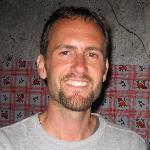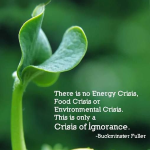
The Pamir Paradyne Proposal by The Pamir Paradyne
 Morgan Ruelle Feb 13, 2015 07:17 |
Hi Michael,
Thank you for starting this proposal! This is an intriguing idea - I look forward to seeing it develop further.
All the best,
Morgan
|
 Michael Hayes Apr 7, 2015 09:45 | Proposal contributor
Hello Morgan,
I hope my proposal is not completely off the mark. Wrapping my mind around this challenge has been a pleasure (I learned a number of interesting facts) and I hope your team finds at least a small part of the proposal useful.
Best regards,
Michael
|
 Natasha Udu-gama Apr 17, 2015 09:19 |
Hi Michael,
29 days until this contest ends! At this point, I would encourage you to start fine-tuning your proposal. We now have an amazing set of judges from the National Consortium for Atmospheric Research (Dr. Greg Holland), The University of Maryland (Dr. Surya Sharma), College of the Atlantic (Dr. Doreen Stabinsky) and The Lowlander Center (Dr. Kristina Peterson) not to mention, our two esteemed advisors. Please see: https://www.climatecolab.org/web/guest/plans/-/plans/contestId/1301102.
I hope your proposal will wow them!
Best of luck!
Natasha
|
 Morgan Ruelle Apr 26, 2015 11:15 |
20 days left to iron out your proposal! Don’t forget to share with your networks to maximize discussion before the deadline! Click on "Share conversation" at the top of this page!
|
 Morgan Ruelle May 1, 2015 09:08 |
15 days left to ensure all content on your proposal is as detailed and accurate as possible! Share your proposal on Facebook, Twitter, LinkedIn or send an email to colleagues asking for comments on your ideas!
|
 Morgan Ruelle May 10, 2015 07:06 |
Hi Michael,
I see you've made some updates to your proposal, thank you! At this point I suggest providing more specifics in the summary section as to the specific actions your project would entail. Some of this is included under the 'Who' section, and could be moved and expanded in the summary. Although you've provided links to background information for your proposal, it would be helpful to include one or two sentences explaining each of the key concepts, such as galvanic reaction and ideasthesia. I also suggest defining 'communication' because you are implying something other than linguistic communication.
Thanks again, and let me know if you have any questions!
Morgan
|
 Michael Hayes May 12, 2015 07:12 | Proposal contributor
Hello Morgan,
I appreciate you taking the time and interest in providing the above feedback.
I'm surprised that you could make....any....sense out of my writings!!! This proposal, for me, is more of an exploration of some interesting philosophical questions with a side helping of technological 'what-ifs'.
1) On the issue of the defining the word 'communication', you are correct that I'm not using that particular word in a traditional way. My view of communication is extremely broad and the definition I have in mind also carries a time factor which is more tuned to time scales beyond human scale.
To further explain my view of communications, I augment the basic definition of ideasthasia to include biogeochemical/non-neural 'inducers/concurrents'. In that, if an act...or condition....creates "activation...of concepts (inducers)....or system changes....." which produces "perception-like experiences (concurrents)"....or system changes... within a secondary complex system, communications has occurred.
The communication dynamics we find at the neural level has biogeochemical equivalences. Nature, in general terms, has an ideasthasia like feedback ability. It is clear that, one change in a biome matrix of relationships will trigger other changes....responses.
That objective signal/response dynamics sounds like an act of 'communications' to me. Your thoughts on the nature of non-human communications would be interesting to read.
2) As to explaining key concepts such as galvanic reactions/ideasthesia, I'll try to comply with your advice yet this proposal is intended to be a broad brush conceptual work and providing deeper technical explanations can be difficult due to my own limitations in those areas of expertise and the overall limitations of the forum.
However, I will try to comply with your suggestions.
The layers of complexity in this particular CoLab challenge are wonderfully supreme. I've greatly enjoyed thinking about this Pamir challenge. It is the intellectual stimulation/joy I find in these challenges which is the overriding reason I involve myself with any of these challenges and your team has produced a challenge which may be un-surpassed for some time.
Please extend my thanks to all of Dr. Kassam's team.
Michael
|
 Morgan Ruelle May 13, 2015 06:36 |
Dear Michael,
Thank you for your note and I'm glad that you are enjoying this challenge! I entirely agree that it's enlightening to consider communication broadly, at much larger temporal scales and between neural and ecological systems. I understand that it is difficult to provide more specific technical explanations - do you have any contacts who can contribute?
Thanks again for a creative, thoughtful proposal!
Best,
Morgan
|
 Morgan Ruelle May 13, 2015 06:56 |
3 days left until the judges will read through your proposal! Take this chance to invite others to weigh-in and ensure your proposal is as comprehensive and accurate as possible! Now is the time to make any last minute changes!
|
 Michael Hayes Jun 6, 2015 01:06 | Proposal contributor
Judges' Feedback:
The proposed studies under the three themes are all interesting but they are research tasks whose outcomes are likely to be relevant to the theme of the contest. The use of advanced technologies mentioned in the proposal would be fruitful when the correlations between the sensor data and variables/characteristics familiar to the farmers are established.
|